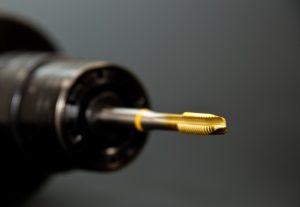
With the advancement of modern science and technology, some new works have started, and now multiple engineering materials are being used with high strength and hardness. Conventional turning technology cannot handle some high-strength and hard materials. High-quality CNC turning services make this possible and help to achieve clear benefits in production.
CNC turning and CNC lathe is a special form of CNC precision machining in which a cutter removes material by contacting a rotating workpiece. CNC turning has made complex work much easier but requires professional operators.
If you want to contact any company for custom parts or even for parts in bulk quantity.
then try to contact professional providing CNC precision machining services; your project will be completed much faster with CNC turning than with conventional turning.
Materials on which CNC turning can be carried out:
The following are some of the materials on which CNC turning operations can be performed easily;
Metals
- Aluminum
- Alloy steel
- Steel
- Stainless steel (SS)
- Brass
- Copper
- Bronze
- Titanium
- Nickel alloy, etc
Plastics
- Nylon
- Polycarbonate
- PTFE, etc
CNC turning services (available operations):
Apart from turning, various other machining operations performed on a CNC lathe machine, some of which are as under:
-
Facing:
Facing is removing metal from the end of a workpiece/part to produce a smooth and flat surface. In this process, the workpiece is often cylindrical, but for a rectangular or odd-shaped workpiece, there will be a need to use a 4-jaw chuck on a CNC lathe marching for the facing process.
-
Taper turning:
Taper turning is a cylindrical turning method in which the resulting diameter is constantly changing. This process usually performed to make conical shafts.
-
Contour turning:
In this CNC lathe operation, instead of running the tool along with a straight line parallel to the axis of rotation, the tool is programmed to follow a contour (usually not straight); in this way, the tool forms a shape in the curved part.
-
Chamfer turning:
The tool’s cutting edge in this CNC turning operation typically used to cut an angle at the corner of the cylinder or workpiece, which called “chamfer”.
-
Cut-off or parting:
Parting is a machining operation in which the part cut off at the end of the machining cycle when the part completed. During this operation, a special tool used that cuts off the workpiece by rotating on an axis and without disturbing the accuracy.
After the part separated, it falls into a basket attached to the CNC machine from where the CNC operator picks it up.
-
Threading:
Threading is a turning operation in which precise and accurate threads created on the outer surface of the workpiece with the help of a special tool. A thread is a standardized helical groove of specified pitch and length. The process repeated repeatedly to make deeper threads on the workpiece.
-
Knurling:
Knurling is a very different type of operation that creates an uneven pattern on the surface of a workpiece. A special type of knurling tool used for this operation, and the main purpose of this process is to make it easier to grip the part.
-
Drilling and boring:
The drilling operation uses drills of different sizes, which extract the chips from the inside of the workpiece and make a precision hole according to the diameter of the drill. And while boring bars used for boring operations with the help of which pre-made holes enlarged.
-
Reaming:
The reaming operation also similar to boring, but it uses reamers, and this operation done where the purpose is to increase the size of the hole very little.























![To Increase YouTube Subscribers Must Use These Service Provider [New]](https://businessleed.com/wp-content/uploads/2022/11/To-Increase-YouTube-Subscribers-Must-Use-These-Service-Provider-New-360x180.jpg)














